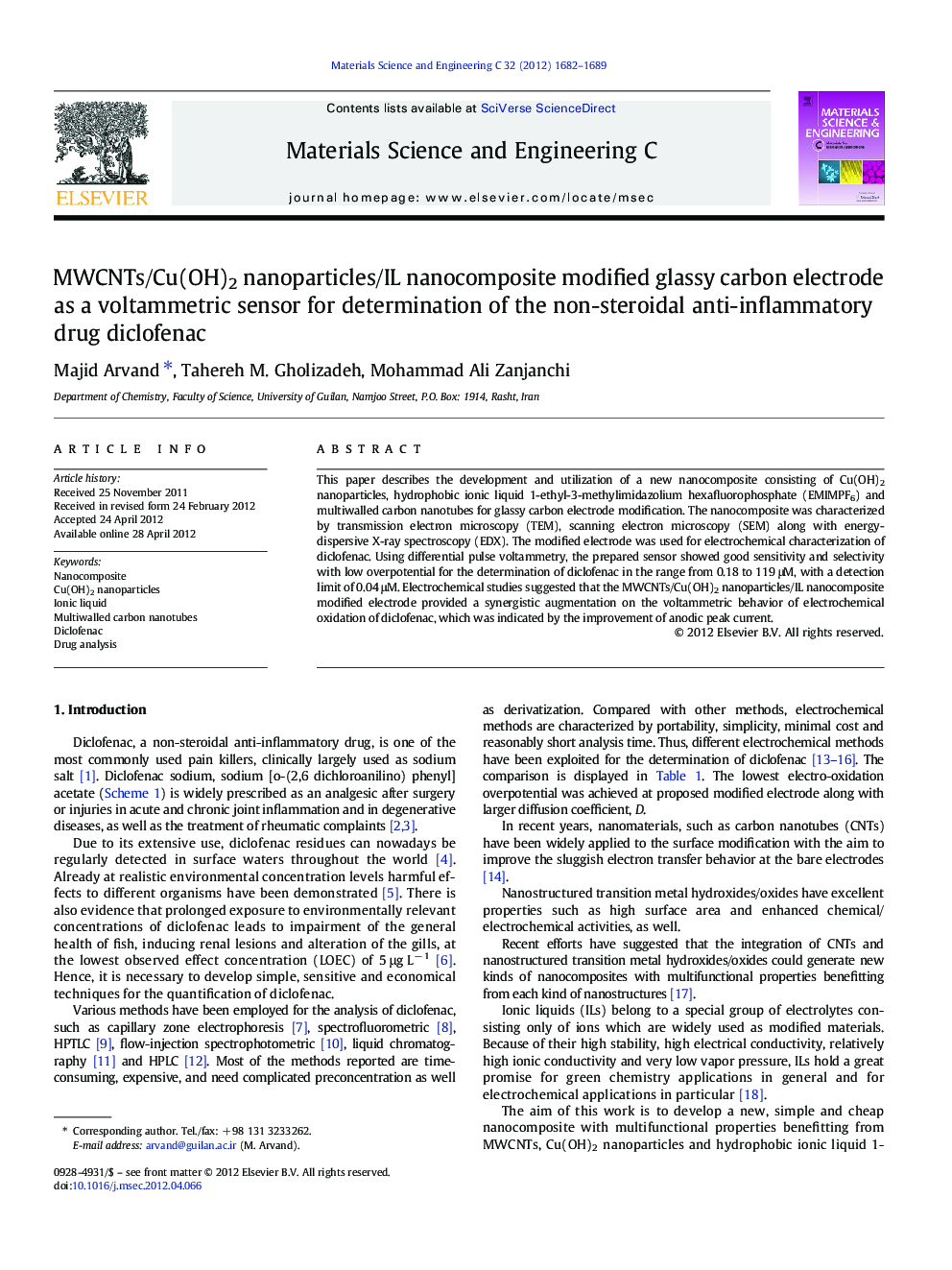| Article ID | Journal | Published Year | Pages | File Type |
|---|---|---|---|---|
| 1428967 | Materials Science and Engineering: C | 2012 | 8 Pages |
This paper describes the development and utilization of a new nanocomposite consisting of Cu(OH)2 nanoparticles, hydrophobic ionic liquid 1-ethyl-3-methylimidazolium hexafluorophosphate (EMIMPF6) and multiwalled carbon nanotubes for glassy carbon electrode modification. The nanocomposite was characterized by transmission electron microscopy (TEM), scanning electron microscopy (SEM) along with energy-dispersive X-ray spectroscopy (EDX). The modified electrode was used for electrochemical characterization of diclofenac. Using differential pulse voltammetry, the prepared sensor showed good sensitivity and selectivity with low overpotential for the determination of diclofenac in the range from 0.18 to 119 μM, with a detection limit of 0.04 μM. Electrochemical studies suggested that the MWCNTs/Cu(OH)2 nanoparticles/IL nanocomposite modified electrode provided a synergistic augmentation on the voltammetric behavior of electrochemical oxidation of diclofenac, which was indicated by the improvement of anodic peak current.
Graphical abstractFigure optionsDownload full-size imageDownload as PowerPoint slideHighlights► This work examines oxidation of diclofenac at a nanocomposite modified electrode. ► The salient feature of this electrode is large diffusion coefficient. ► The proposed electrode decreased overpotential of diclofenac electrooxidation. ► The modified electrode has good stability and reproducibility.
